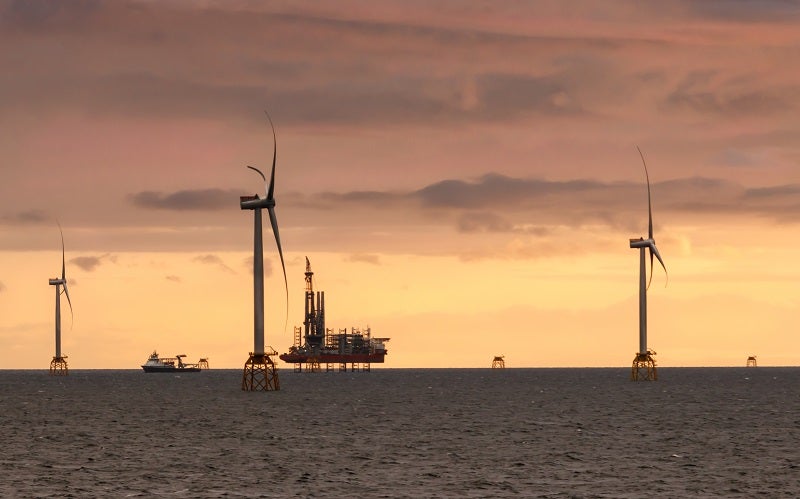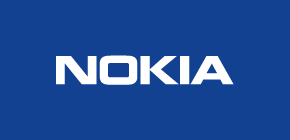
The North Sea project comprises 14 wind farms in the Belgian North Sea and part of the Dutch waters. In 2010, nCentric began providing wireless connectivity to the area, starting with wireless mesh technology at Noblewind and Belwind offshore wind farms. This was extended with 5G-ready systems in 2018 when nCentric entered a partnership with Nokia due to demand for reliable communication and the transfer of larger amounts of data.
Providing private LTE to the North Sea ensures that wind farm operators can keep workers, vessels, sensors and operation centres reliably connected, which can no longer be done in a cost-effective way if relying solely on satellite, 3G services and VHF radio.
Offshore wind farm power generation is increasingly in demand, and the North Sea is an ideal location for expansion. According to Wind Turbine, Update 2019: Global Market Size, Competitive Landscape and Key Country Analysis to 2023 published by GlobalData: “The high wind speed in the North Sea and Baltic Sea has proved beneficial in producing electricity at a consistent rate, making the offshore farms important for grid operations.”
An early example of offshore wireless connectivity in the North Sea is nCentric’s coverage of Northwind in 2013. At the time of installation, the wind farm comprised 216 turbines that required high bandwidth inter-vessel communication and reliable internet uplinks. Using an existing fibre connection running back to shore, nCentric extended the bandwidth. Since then, demand for offshore wind power has continued to grow, and increasing industry use of digitalisation and automation requires communications with faster speeds and lower latency.
The challenge
GlobalData wind turbine market analysis states that “the share of offshore wind turbines in the global wind turbine market value is expected to grow considerably in the forecast period (2019–2023) owing to the increasing preference to offshore wind in various major countries. In the historic period (2014–2018), the aggregate value of offshore wind turbines was $21.58bn and the aggregate value is expected to reach $35.59bn in the forecast period (2019–2023).”
Prior to 2010, there were fewer turbines and they were generally constructed at nearshore wind farms. This meant that vessels could travel out to the offshore area daily and required minimal wireless communication. After 2010, taller, more powerful wind turbines began to be used and countries such as Belgium enacted laws requiring these be constructed further from shore, meaning vessels were spending more time away, requiring larger crews and greater connectivity. VSAT (or 3G when available) was, and still is, used, but could prove expensive and had limited speed. Today, offshore wind farms are bigger than ever and will continue to grow with larger turbines to take advantage of high wind speeds further offshore. Private LTE/4.9G solutions that are 5G-ready ensures that operators will be able to keep up with greater data transfer requirements for workers and large vessels spending more time at sea.

Industry 4.0 trends will also impact data transfer needs. IoT, predictive maintenance, drones and AR/VR applications require lower latency, higher bandwidth and higher speeds. Being 5G-ready means that wind farms will be prepared for their digital transformation.
Push-to-talk and push-to-video communication is important between workers at the turbine towers, in helicopters, on-board vessels, and onshore during the construction phase. This enables collaboration between teams, remote assistance, communication with emergency services and communication with friends and family. In addition, an ability to share large data files such as construction blueprints is also necessary.
Overall, wind farms are faced with the challenge of providing wireless connectivity at speeds far beyond what could have been imagined ten years ago, but how can this be done in a way that is both efficient and cost-effective?

The solution
The Nokia private LTE system, which is 5G-ready, is complemented with the existing nCentric mesh network to provide a solution for high speed, reliable connections with broadband bandwidth and low latency.
Wireless base stations (LTE/5G and mesh) are installed on the wind farm’s substations, which are fibre connected to the shore and some turbine towers to provide coverage throughout the wind farm. The vessels have been equipped with a combination of mesh and 5G-ready equipment, enabling voice communication and data transfer, and even AR/VR remote assistance. This on-board network is divided into work and leisure networks to separate traffic. In addition to the fibre connection to shore, microwave is an option as a redundant path and for connectivity during construction before the fibre is laid on the sea bed.
Leaky feeders are pre-installed in the turbine tower so personnel have mobile connectivity during the construction phase. This eliminates the need and cost of installing access points or IP telephones on every floor inside the turbine. Each turbine is also fitted with customised wireless equipment to manage the numerous sensors required for predictive maintenance. Sensors collect data such as temperature, vibration, humidity and current, which can be fed into analytic engines, such as Nokia Wind Farm Analytics, that use machine learning to develop accurate models of turbine performance and adjust asset maintenance programs in real time. Putting optical interfaces into sensors would be very expensive to manufacture and install, whereas LTE/5G-ready private wireless networks are far more cost-effective.
Thanks to this combination of 5G-ready private LTE and mesh networks, the entire Belgian North Sea has secure, reliable, broadband communications coverage, changing the way that construction and maintenance in the area will be carried out in Industry 4.0.




